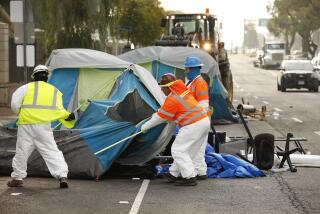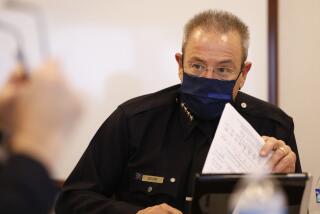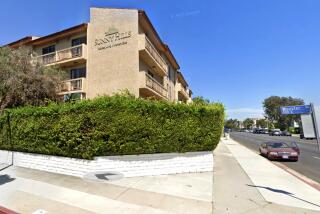Judge Finds No Bias in Torrance Test
In a ruling that could affect municipalities nationwide, a federal judge Tuesday said Justice Department attorneys had failed to prove that the city of Torrance gives racially biased tests to candidates for its police and fire departments.
In a nine-page ruling, U.S. District Court Judge Mariana R. Pfaelzer said the federal government “has wholly failed to disprove the defendant’s case,” which held that the city merely was testing for such basic, necessary skills as reading comprehension and writing, not seeking to exclude minorities.
Torrance’s attorneys “not only established that the written examinations and the manner in which they have been used serve the legitimate goals of the city, but also that the tests as used were job-related and were in fact consistent with business necessity.”
The government’s suit claimed in part that Torrance discriminated against minority candidates through its tests, the same ones given by many police and fire departments nationwide. Pfaelzer will hear the second phase of the case later this summer. In that section, which applies only to the Torrance Police Department, the government alleges that the city is racially discriminatory in its background checks and maintains a racially hostile work environment.
“These are general, standardized tests of the ability to read, comprehend, recall and apply information. They measure those skills roughly at the 11th-grade level,” said Wayne S. Flick, one of the attorneys representing Torrance. “We told the judge on the first day of the trial that you don’t need expert testimony to reach the conclusion that entry-level police officers and firefighters need those basic building blocks.”
Justice Department attorneys could not be reached for comment.
From 1981 to 1992, 3,200 people applied for 79 firefighter jobs, said another attorney for Torrance, Lisa Von Eschen. And from 1986 to 1992, 2,100 applied for 68 posts in the Police Department.
With such large pools of candidates, the city asked, what better way to begin eliminating applicants than through basic skills tests?
Pfaelzer also wrote that the government “has not shown that other tests or selection devices, without a similarly undesirable racial effect, would also serve the employer’s legitimate interests.”
The ruling was seen as a major victory for the politically feisty South Bay city of 135,000. The government sued three other Los Angeles-area municipalities in 1991, alleging the same types of discriminatory hiring practices.
Pomona, El Monte and Alhambra all paid hundreds of thousands of dollars to settle their cases, but Torrance elected to fight what officials called baseless allegations. By the time the trial ends later this summer, the city will have laid out $3 million to defend itself, with city officials saying all along it was money well spent.
Justice Department investigators began looking at Torrance in 1991. When they filed the suit in 1993, the government said of the 233 sworn police officers, three (1.2%) were black, 15 (6.4%) were Latino and six (2.5%) were Asian. Of the 160 Fire Department employees, one (0.6%) was black and two (1.2%) were Latino.
According to U.S. Census figures, 22% of Torrance residents were Asian American, 10% were Latino and 1.7% were African American.
Although attorneys for the city, and others, have said the outcome of the hotly contested Torrance case probably would set precedent for similar cases the government has filed throughout the country, Venice civil rights attorney Stephen Yagman said he doubted that would prove true.
“The ruling is not a validation of these tests at large, but rather is a limited ruling based upon the way Torrance administers the tests,” he said.
More to Read
Sign up for Essential California
The most important California stories and recommendations in your inbox every morning.
You may occasionally receive promotional content from the Los Angeles Times.










